As you probably know, we are big South Africa fans and would like to travel to many more countries on the African continent in the future. Africa will always be the most beautiful part of the world for us, even though we’ve never been to South America, Australia, or Oceania. We’re thrilled that today’s travel report is about the beautiful country of Namibia, which is also very high on our imaginary wish list. Our travel reporter Bahia shares her top 5 Namibia highlights with us today, in addition to the standard sights, such as the Sossusvlei salt pan, Etosha National Park, Dune 45, Spitzkoppe, Namibia’s highest mountain, the Brandberg, and the mighty Fish River Canyon. We hope you enjoy browsing!
- How am I supposed to decide?
- Namibia Highlights – Biodiversity
- Namibia Highlight – My Road Trip with a Rooftop Tent
- Namibia Highlights – The Hoba Meteorite
- Namibia Highlight – Sundowner Mentality
- Namibia Highlights – Kolmanskop Including a Guided Tour
How am I supposed to decide?
When Bolle and Marco asked me about my top 5 Namibia highlights, I initially thought, “Easy! I’d love to!” And now I’m sitting here in front of my screen and just can’t decide. The classics like Sossusvlei*, Etosha National Park*, or Swakopmund* are probably on everyone’s radar when planning a trip to Namibia, and so I’ve decided not to be someone else who tells you how worth seeing there is. But which five highlights should I choose?
Namibia is about 2.5 times the size of Germany and certainly at least 2.5 times as diverse. In the north, bordering Angola and the Caprivi Strip, it’s lush green; in the east, the Kalahari sands are fiery red; in the south, it’s so dry that you barely encounter any vegetation or wildlife in places; and in the west, the only (and oldest) desert in the world that meets an ocean. And in between, there’s a colorful mix of everything. Its inhabitants and indigenous groups are as diverse as the country itself.
You simply can’t get to know Namibia in 10 days, and I’m very glad that I have family and friends in Namibia and have therefore been able to spend several months there. Unfortunately, I can’t commit to a real ranking – it was difficult enough narrowing it down to five. If you’d like me to introduce you to my other highlights or provide more detailed information, please feel free to visit my site.
Namibia Highlights – Biodiversity
Namibia’s biodiversity is as diverse as the country and its inhabitants. Whether plants, mammals, or birds – everyone will find a piece of nature to fall in love with here. From Etosha National Park to the Kalahari and “across the country”: the next highlight awaits you around every seemingly unspectacular corner. Namibia is home not only to all of the famous Big Five animals, but also to many other animals and plants that are not only worth seeing, but also worth protecting.
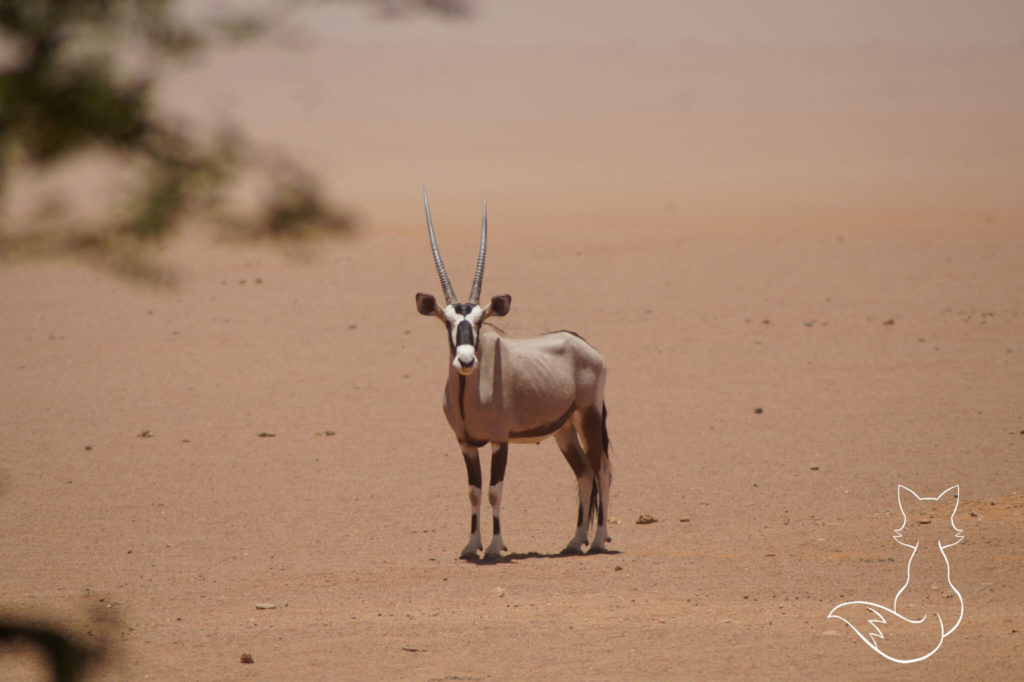
Namibia Highlight – My Road Trip with a Rooftop Tent
During the German winter of 2020, I was finally able to fulfill a long-held dream: a road trip with a rooftop tent through Namibia. I traveled from December through January of the following year – for a total of about three weeks. I definitely recommend: the more time you plan, the better the trip will be. Not only did I have the most beautiful sunny days, but I was also fortunate enough to experience one of the longest rainy seasons in decades – in most cases, it had just stopped raining when I arrived, and the landscape shimmered in the most beautiful colors of the rainbow. When it rains in Namibia, people react differently than in Germany: They dance out of their houses, can’t stop smiling and being happy, and get very creative in developing new water sports. It’s a celebration! Especially when it rains as much as it did during this premature major rainy season of 2020/2025.
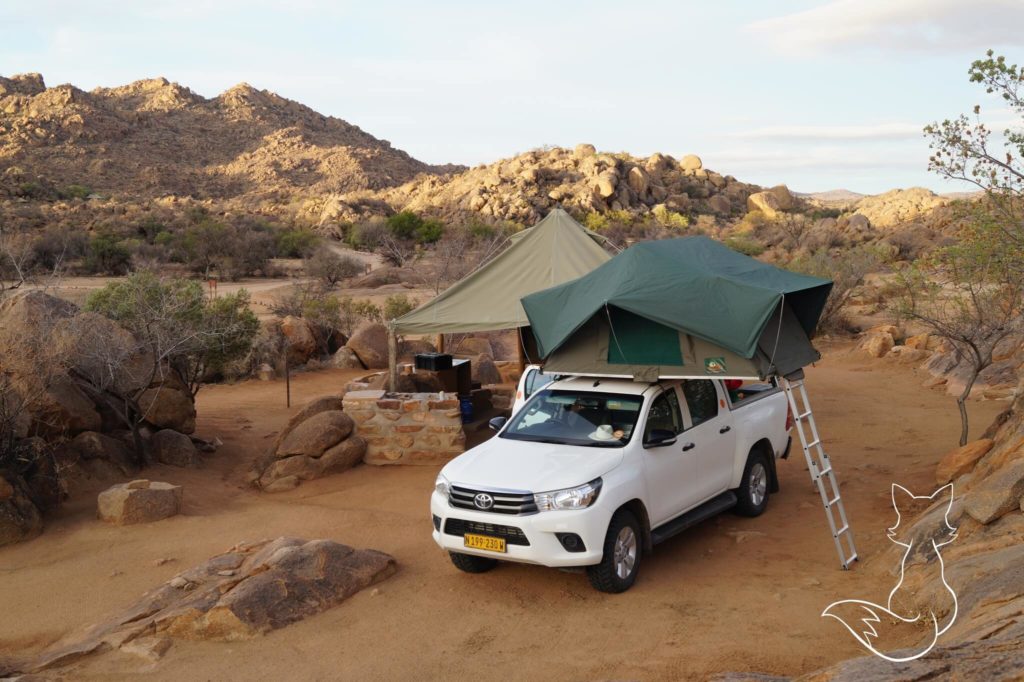
Setup and takedown in just a few minutes
A rooftop tent is very easy to set up and take down, by the way. If you’ve never slept in one or traveled with one, you really have nothing to worry about. My first set-up and takedown without instructions took only a few minutes (and then, of course, got faster and more coordinated each time). Anyone who has never camped outside of Germany—or perhaps even Europe—will be very surprised: positively! Most campsites in southern Africa only have space for a few cars (after all, there are fewer travelers), making camping here much quieter, more relaxed, and less contact-intensive. The campsites are significantly more beautiful than the classic European ones, which is not only due to the surrounding landscape, but also to the loving care with which they are managed. It’s a dream!
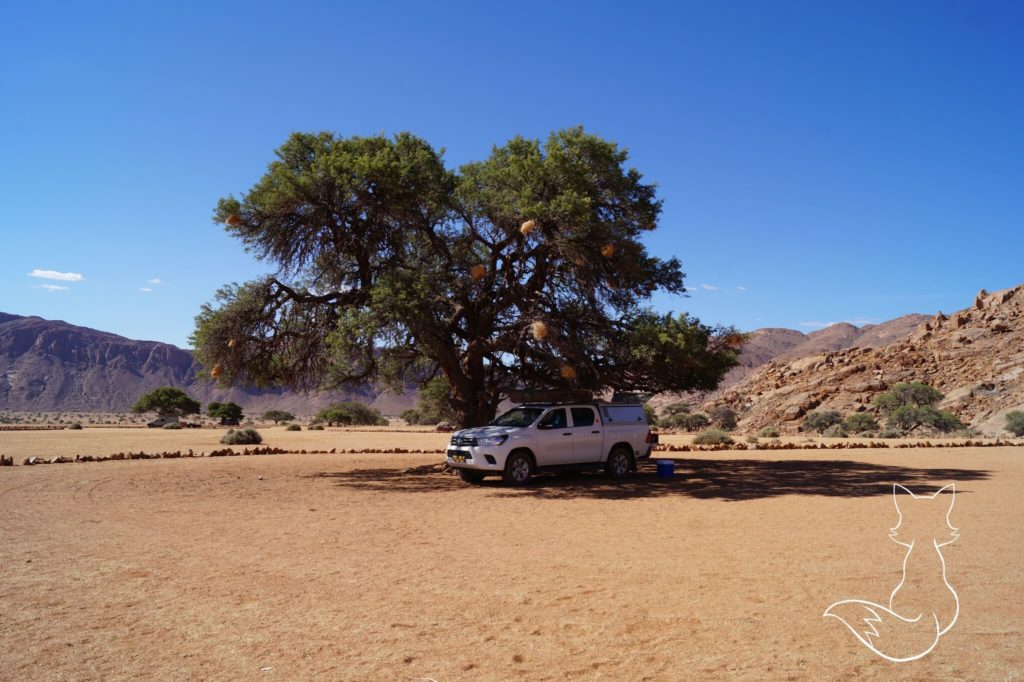
Whether—like me—you’re traveling to the south, the north, or any other part of the country: If it were up to me, I’d never travel without a roof tent again. A roof tent offers an indescribable feeling of freedom, and to be honest, I’ve never slept as well as I did on the nights spent on the roof of my car. You can find everything about my trip, the route, and the most important information here: My time in Namibia.
Namibia Highlights – The Hoba Meteorite
BOOOOOOOOOOOOOOOOOOOOOOOOOOOOOMMMMMM!!!!
It must have sounded something like this, or even much louder, about 80,000 years ago when the Hoba meteorite hit the Earth. It is the largest intact meteorite ever discovered on Earth. Until 1920, it was completely covered by soil and only surfaced by chance while plowing the ground. The Hoba meteorite hit the Earth in the Otavi Mountains, about 20 km west of Grootfontein, and will probably stay there forever. Its estimated age is 190–410 million years. A truly lovingly constructed area surrounds this 50-60 ton colossus made of iron, nickel, and cobalt.
The parking lot is very large, and the surrounding garden is beautifully landscaped. At the entrance, there’s a small ticket counter with a local souvenir shop, where you can purchase a ticket for a few NAD (Namibian dollars). You then follow a narrow path lined with shady trees, and before you reach the meteorite, you stumble across signs warning of falling cosmic boulders—is a helmet really enough here? This is all just a joke, of course, and the area is absolutely safe.
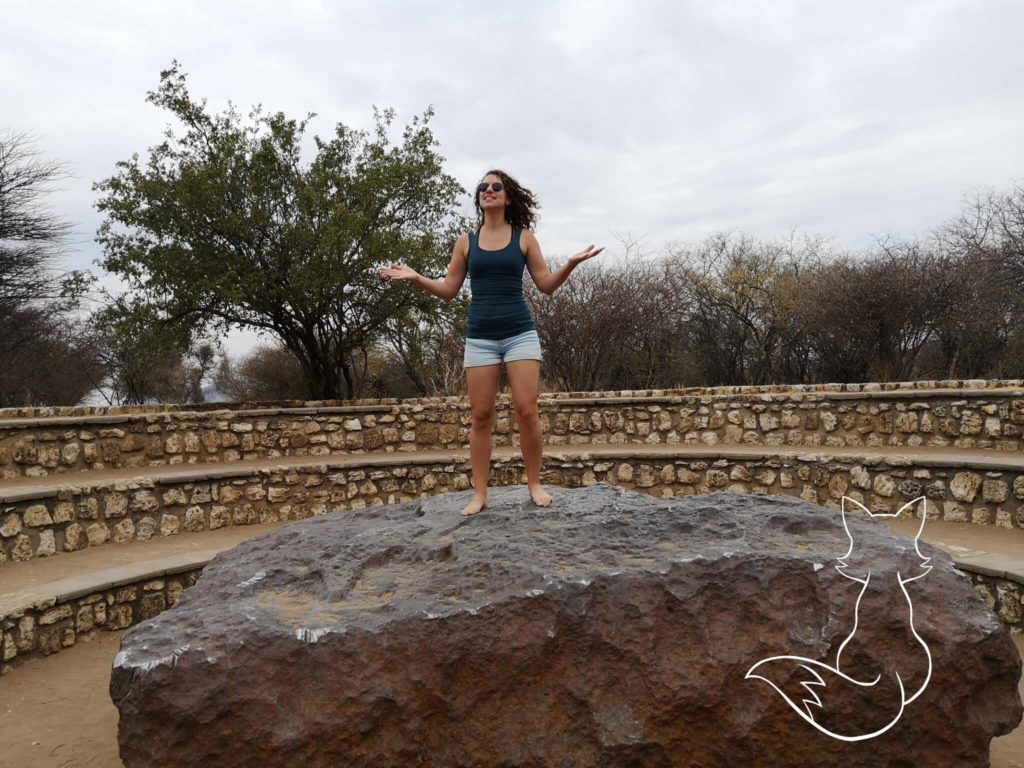
You might be wondering why there isn’t much left of what must have been a massive impact crater back then. This is because craters from larger meteorites are rendered unrecognizable over the course of a few decades by vegetation and atmospheric weathering. The Hoba meteorite is impressive not only for its size, structure, and the heat it radiates, but also for its acoustics. Acoustics?! Stand in the middle of the meteorite and sing a song or tell a story. I can hardly describe the strangely echoing, yet muffled sound in words.
Namibia Highlight – Sundowner Mentality
Not only Namibia, but most southern African countries, have a very special sundowner mentality. It’s not about drinking as much gin and tonic or wine as possible – in my case, sundowners are exclusively non-alcoholic – but rather about ending a wonderful day together in a relaxed manner with good friends or simply nice people. Usually with a delicious braai; a BBQ that stands out from the classic BBQ with a very special mentality and love of food.
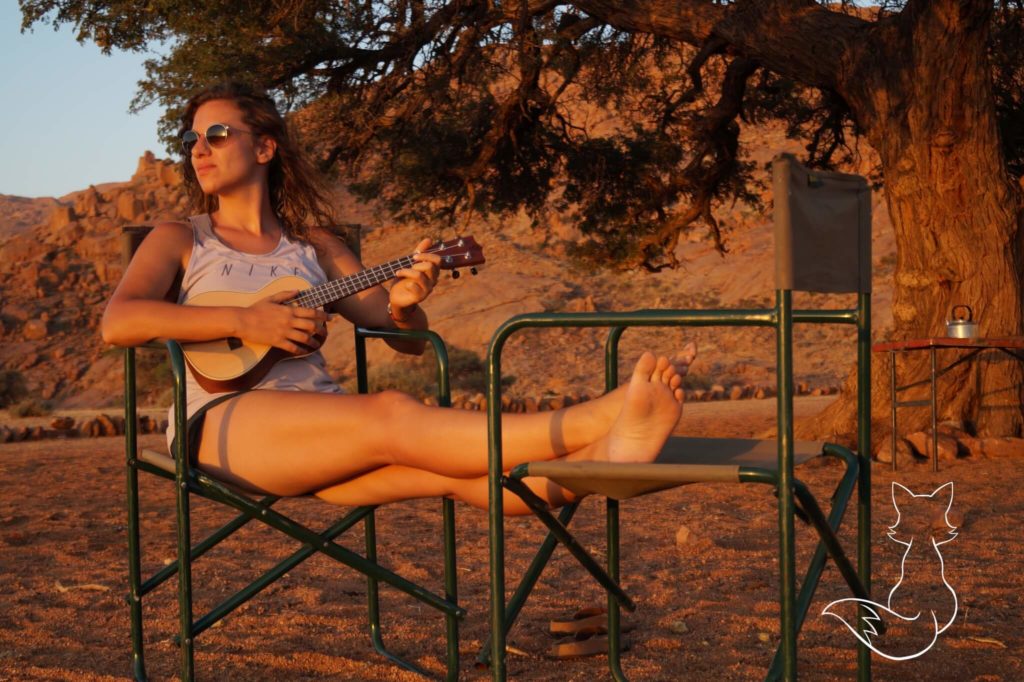
Dune 45 in Sossusvlei, the Brandberg massif, or simply sitting in the sand at the foot of the stepladder at the entrance to the roof tent: Reflecting on the day with a proper sundowner, sharing the highlights you’ve often experienced together, simply enjoying the breathtakingly beautiful African sunsets in silence, and spending time with loved ones is simply beautiful at every single spot and slows things down in a very special way.
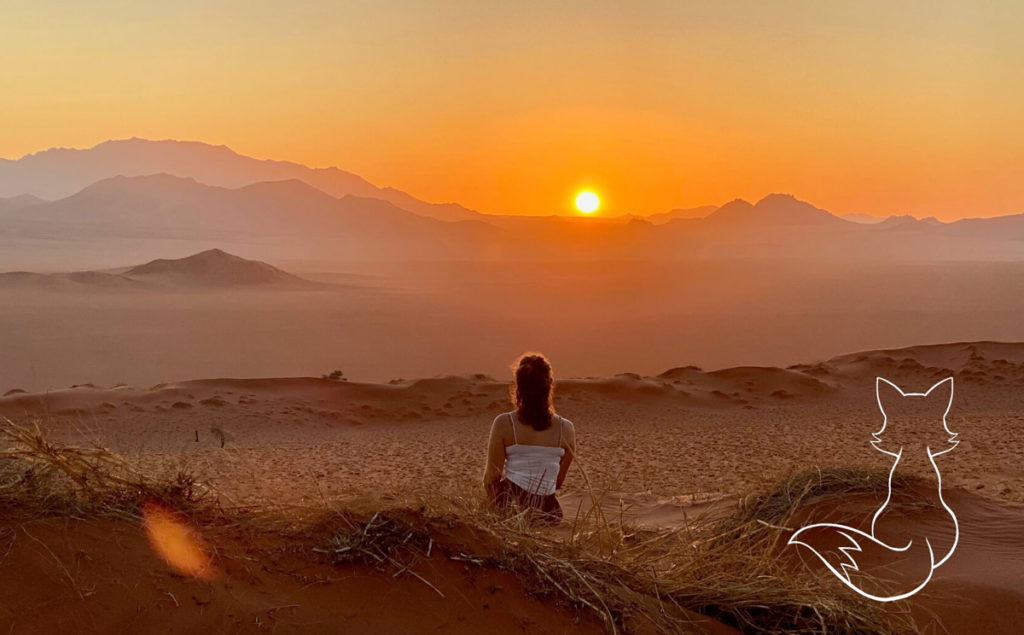
Namibia Highlights – Kolmanskop incl. Guided Tour
Okay, I have to mention one classic Namibia highlight after all. And one that I was more excited about than I thought it would be: Kolmanskop. Less than 15 kilometers from Lüderitz, in the direction of Klein-Aus Vista, lies the ghost town of Kolmanskop. Yes, it’s as cool as it looks in photos. Visually, at least, because historically, it’s not only very fascinating, but also sad and at times horrific – as Namibia’s history unfortunately often is due to its status as a former German colony.
The ghost town is the present-day remnant of the Diamond Age around 1911. At that time, 300 adult Germans and their 44 children lived here. Each of these luxurious houses had running water, electricity, and its own telephone line. There was a private hospital, private teachers for the 44 children, a casino, a bowling alley with its own bowling club, a gymnastics club, various and regularly changing theaters and operas, a ballroom, an oversized saltwater swimming pool, fresh lemonade daily, ice for the refrigerators, and everything else the heart could desire. Because all 344 German residents were not allowed to simply leave the site (also for fear of diamond smuggling).
This unprecedented urban development sprang up within just two years. Drinking water and food were brought in from Cape Town, 1,000 kilometers away. Money played absolutely no role here, and so even the machinery and all the building materials for the houses and infrastructure were shipped in from Germany. The Kolmanskop hospital even had Africa’s first X-ray machine installed! This was certainly also to check the workers for swallowed diamonds… but they were also truly creative. There’s an exhibition about this in one of the rooms in the main building today.
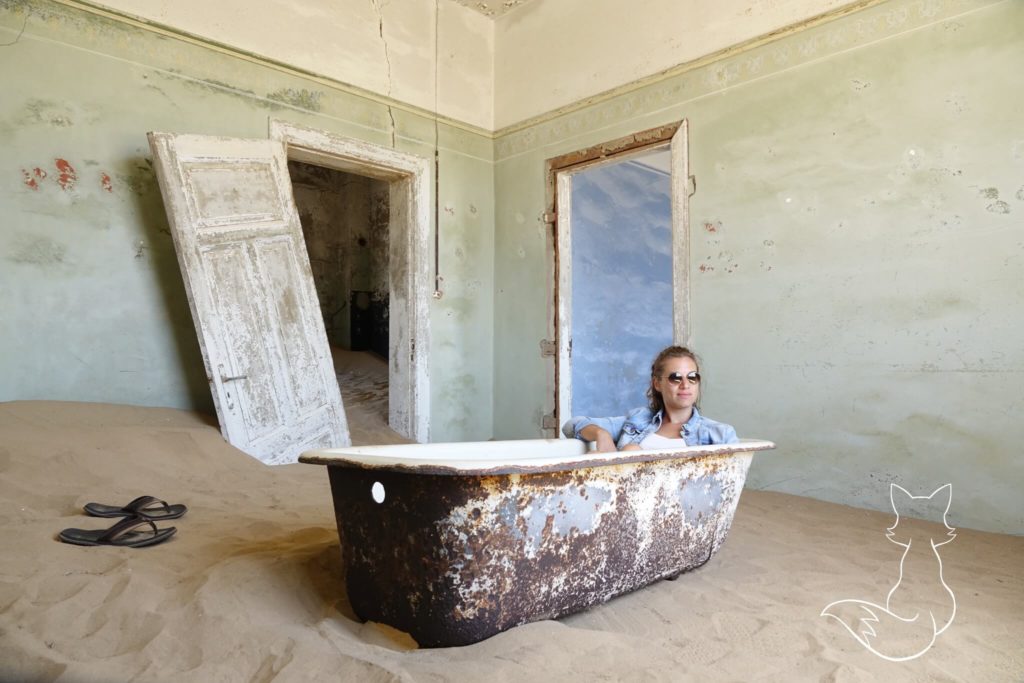
In cramped quarters in warehouse-like buildings
Across from the pompous colonial houses, 800 Ovambo lived in cramped quarters in warehouse-like buildings and without 24/7 entertainment, mining the diamonds. The workers were “replaced” at regular intervals for safety reasons. Before they were allowed to leave the site, however, they had to be quarantined for 14 days. During this time, they were given laxatives, and their toilets were equipped with sieves to ensure that no diamonds could be smuggled out unseen.
Since the diamonds wash up from the sea, you only have to search at depths of up to 5 meters. Back then, one to two carats of rough diamonds (0.2–0.4 grams) could be mined from 10 tons of sand, and up until the First World War, one ton of diamonds (5 million carats) could be mined. But no, I didn’t find any diamonds. If you did, you obviously couldn’t just take them out. The tour is included in the entrance fee and lasts only 45 minutes. I can truly recommend it wholeheartedly!
Thank you! Thank you so much – in Afrikaans. Thank you for taking the time to let me take you on a little journey to Namibia. If you want to learn more about the country, its people, traditional weddings, crazy stories, and long car rides, or simply want to see me actually eating the traditional mopane worms, then check out my blog or feel free to contact me! Best wishes and I look forward to hearing from you. Bahia.